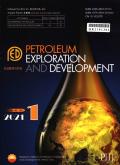Accumulation mechanism and enrichment model of deep tight sandstone gas in second member of Upper Triassic Xujiahe Formation, Xinchang structural belt, Sichuan Basin, SW China
IF 8
Q1 ENERGY & FUELS
引用次数: 0
Abstract
Taking the second member of the Xujiahe Formation of the Upper Triassic in the Xinchang structural belt as an example, based on data such as logging, production, seismic interpretation and test, a systematic analysis was conducted on the structural characteristics and evolution, reservoir diagenesis and densification processes, and types and stages of faults/fractures, and revealing the multi-stage and multi-factor dynamic coupled enrichment mechanisms of tight gas reservoirs. (1) In the early Yanshan period, the paleo-structural traps were formed with low–medium maturity hydrocarbons accumulating in structural highs driven by buoyancy since reservoirs were not fully densified in this stage, demonstrating paleo-structure control on traps and early hydrocarbon accumulation. (2) In the middle–late Yanshan period, the source rocks became mature to generate and expel a large quantity of hydrocarbons. Grain size and type of sandstone controlled the time of reservoir densification, which restricted the scale of hydrocarbon charging, allowing for only a small-scale migration through sand bodies near the fault/fracture or less-densified matrix reservoirs. (3) During the Himalayan period, the source rocks reached overmaturity, and the residual oil cracking gas was efficiently transported along the late-stage faults/fractures. Wells with high production capacity were mainly located in Type I and II fault/fracture zones comprising the late-stage north-south trending fourth-order faults and the late-stage fractures. The productivity of the wells was controlled by the transformation of the late-stage faults/fractures. (4) The Xinchang structural belt underwent three stages of tectonic evolution, two stages of reservoir formation, and three stages of fault/fractures development. Hydrocarbons mainly accumulated in the paleo-structure highs. After reservoir densification and late fault/fracture adjustment, a complex gas-water distribution pattern was formed. Thus, it is summarized as the model of “near-source and low-abundance hydrocarbon charging in the early stage, and differential enrichment of natural gas under the joint control of fault-fold-fracture complex, high-quality reservoirs and structural highs in the late stage”. Faults/fractures with well-coupled fault-fold-fracture-pore are favorable exploration targets with high exploration effectiveness.
四川盆地新场构造带上三叠统须家河组二段深层致密砂岩气成藏机制与富集模式
以新场构造带上三叠统须家河组二段为例,根据测井、生产、地震解释、试验等资料,系统分析了该段致密气藏的构造特征与演化、储层成岩致密化过程、断裂/裂缝类型与期次,揭示了致密气藏多期次、多因素的动态耦合富集机制。(1)早燕山期由于储层致密化程度不高,形成了受浮力驱动的低-中成熟油气向构造高点聚集的古构造圈闭,表明了古构造对圈闭和早期油气聚集的控制作用。(2)燕山中晚期烃源岩成熟,生排大量烃。砂岩的粒度和类型控制了储层致密化的时间,限制了油气充注的规模,只能通过断层/裂缝附近的砂体或密度较低的基质储层进行小规模的运移。(3)喜马拉雅期烃源岩过成熟,剩余油裂解气沿晚期断裂/裂缝高效输送。高产井主要位于ⅰ型和ⅱ型断裂/裂缝带,其中ⅰ型和ⅱ型断裂/裂缝为后期南北向四阶断裂和后期裂缝。这些井的产能是由后期断层/裂缝的转变控制的。(4)新场构造带经历了3个构造演化阶段、2个储层形成阶段和3个断裂/裂缝发育阶段。油气主要聚集在古构造高位。经过储层致密化和后期断缝调整,形成了复杂的气水分布格局。将其归纳为“早期近源低丰度油气充注,后期在断褶-裂缝复合体、优质储层和构造高点共同控制下天然气差异富集”的模式。断褶-裂缝-孔隙耦合良好的断裂/裂缝是勘探效益高的有利靶区。
本文章由计算机程序翻译,如有差异,请以英文原文为准。
求助全文
约1分钟内获得全文
求助全文

 求助内容:
求助内容: 应助结果提醒方式:
应助结果提醒方式:


